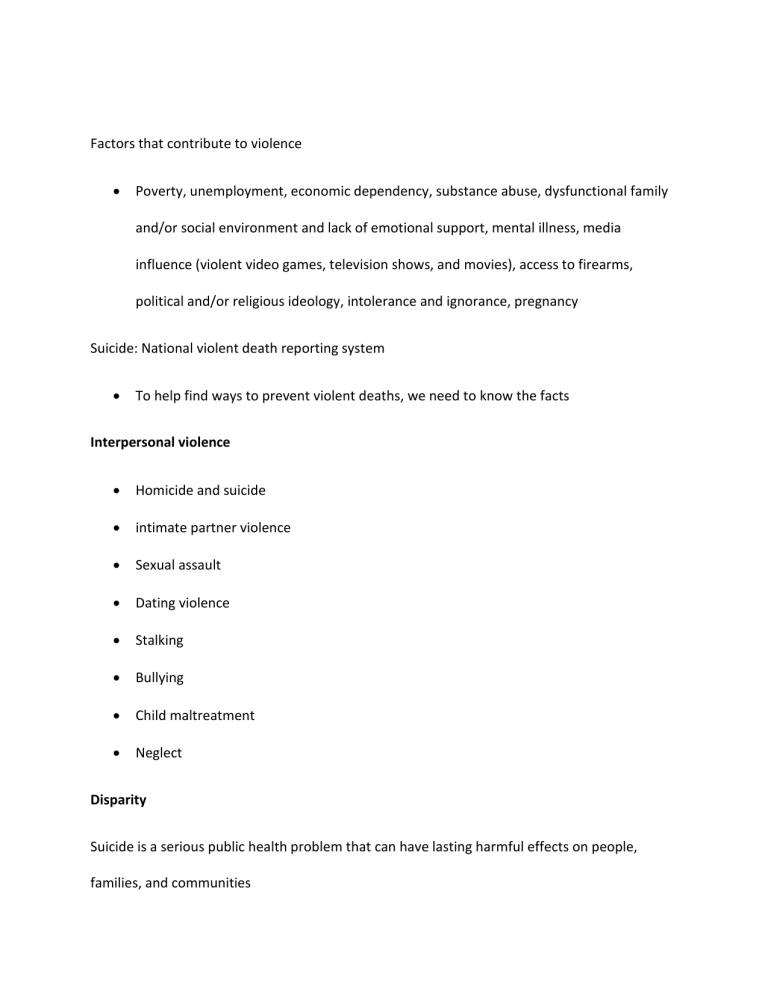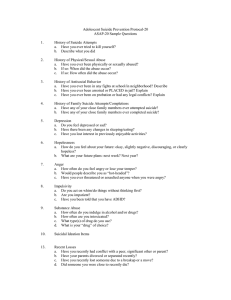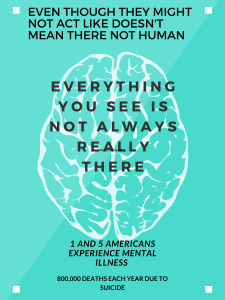
Factors that contribute to violence Poverty, unemployment, economic dependency, substance abuse, dysfunctional family and/or social environment and lack of emotional support, mental illness, media influence (violent video games, television shows, and movies), access to firearms, political and/or religious ideology, intolerance and ignorance, pregnancy Suicide: National violent death reporting system To help find ways to prevent violent deaths, we need to know the facts Interpersonal violence Homicide and suicide intimate partner violence Sexual assault Dating violence Stalking Bullying Child maltreatment Neglect Disparity Suicide is a serious public health problem that can have lasting harmful effects on people, families, and communities Veterans People who live in rural areas Sexual and gender minorities Middle-aged adults Tribal populations (native Americans can have a higher rate of alcohol and drug use) These groups may disproportionately experience factors linked to suicide, such as substance misuse Suicide risk factors MDD, bipolar disorder, schizophrenia Substance abuse PTSD Eating disorders Friends that committed suicide Age (elderly white males has the highest rate) Postvention: intervention conducted after a suicide, largely taking the form of support for the bereaved Preventing suicide Strengthen economic supports (strengthen household financial security) Protective environments (organizational policies, community-based policies) Promote connectedness (peer mom programs, community engagement activities) Teach coping and problem-solving skills (parenting skill and family relationship programs) Identify and support people at risk (crisis intervention, Tx to prevent re attempts) Lessen harms and prevent risk (postvention, safe reporting) Risk factors for IPV Low self-esteem, poverty, risky sexual behavior, eating disorders, substance abuse, trust and relationship issues Victims often suffer in silence and accept abuse Dating violence: abusive, controlling, aggressive behavior in an intimate relationship Date rape: Xanax, Klonopin, alcohol, GHB Stalking: pattern of repeated and unwanted attention, contact, harassment directed at a person that instills fear Pregnancy Preeclampsia: hypertension during pregnant Woman’s blood pressure goes up after delivery: evaluate for abuse Increases stress Use of harmful substances Unexplained bruising to the chest and abdomen Wheel of Power and control Intimidation (displaying weapons, destroying pots) Emotional abuse (putting her down, making her feel guilty, humiliating her) Isolation (being controlling) Minimizing, denying, and blaming (making light of the abuse, saying she caused it) Using children (threatening to take the kids away, using visitation to harass her) Using male privilege (treating her like a servant, being like a “master”) Using economic abuse (preventing her from getting or keeping a job, taking her money) Using coercion and threats (threatening to leave her or commit suicide, making her do illegal things) Impact of IPV Victims will experience Chronic fatigue Disturbed sleeping Misdiagnosis often occurs Victims might stay because of cultural, religious, and economic factors



